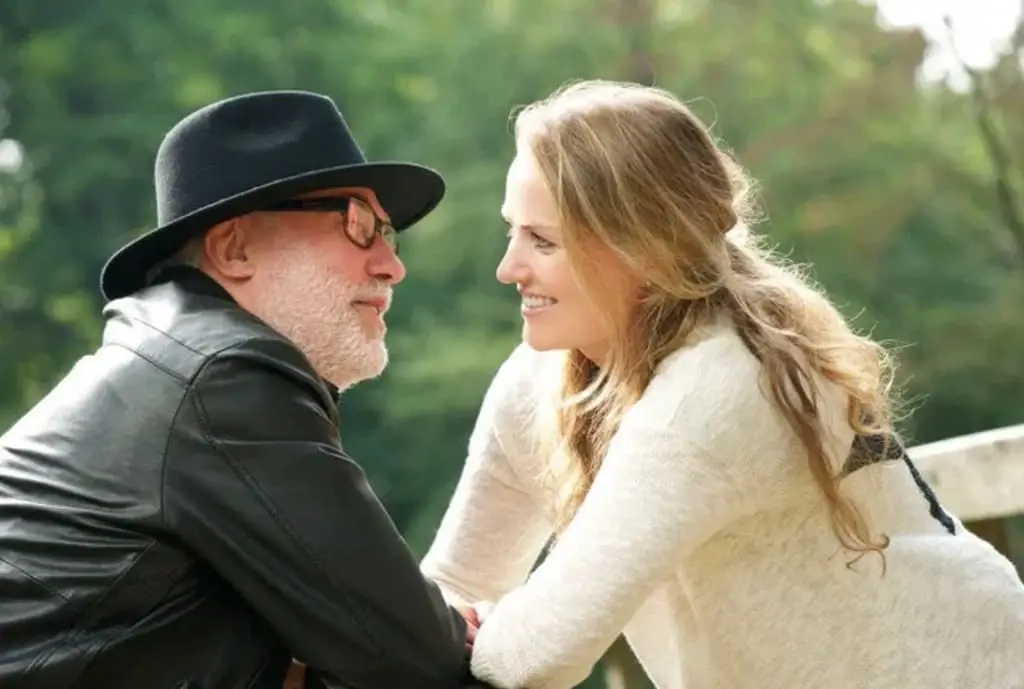The Secret Advantage Older Men Have On The Dating Market
While the dating world keeps evolving, one pattern remains remarkably consistent — the enduring appeal of older men. Older men occupy a specific position in dating markets that gives them measurable advantages over their younger counterparts. Census data from 2022 shows that 76% of marriages with ten-year age gaps feature an older male partner. This pattern persists across cultures and relationship types, though the reasons run deeper than simple statistics.
- The Numbers Behind Age-Gap Relationships
- What Makes Older Men Attractive Partners
- Why Compatibility Beats Convention in Partner Selection
- The Health and Happiness Factor
- Public Perception and Social Acceptance
- Challenges That Come With Age Differences
- The Changing Market Dynamics
- Geographic and Cultural Variations
The Numbers Behind Age-Gap Relationships
The average age difference between married partners in the United States sits at 2.2 years, down from 4.9 years in 1880. This decline masks a persistent reality: 8.5% of married opposite-sex couples maintain gaps of ten years or more. Men enter these relationships far more frequently than women. Only 1.3% of marriages feature women who are ten years older than their husbands.
Same-sex couples show even stronger tendencies toward age differences. Between 20% and 25% of these relationships involve partners separated by at least a decade. Second marriages also demonstrate wider gaps, averaging 5.6 years for heterosexual couples and 7.4 years for same-sex pairs.
What Makes Older Men Attractive Partners
Financial stability ranks high among the qualities that make older men appealing to potential partners. Men in their forties and fifties have typically established careers and accumulated assets that younger men lack. This economic security translates into lifestyle opportunities that many partners find appealing.
Emotional maturity develops through years of relationship experience and personal growth. Older men have weathered breakups, career setbacks, and family responsibilities. These experiences teach emotional regulation and communication skills that younger men often lack. Partners seeking stable, drama-free relationships gravitate toward men who have learned these lessons.
Life experience provides older men with conversational depth and worldly knowledge. They can discuss topics ranging from professional insights to cultural events they witnessed firsthand. This breadth of knowledge creates intellectual stimulation that many partners value highly.
Why Compatibility Beats Convention in Partner Selection
Older men often attract partners through qualities that go beyond surface-level attributes. Some pursue traditional relationships, while others explore different arrangements, with certain men specifically looking for a sugar baby or seeking companions who share their lifestyle preferences. The appeal extends beyond any single relationship type and centers on maturity, established careers, and clarity about what they want from life. These men have moved past the uncertainty that characterizes younger dating and can articulate their expectations clearly.
Life stage alignment matters more than birth certificates when partners connect meaningfully. Older men bring perspective from decades of professional and personal growth, making them attractive to those who value stability and direction. Their dating success stems from knowing themselves well enough to pursue compatible partners rather than following conventional patterns. This self-awareness allows them to form connections based on shared values rather than age proximity alone.
The Health and Happiness Factor
Research indicates that older men in age-gap relationships report higher satisfaction levels than their partners. Men paired with younger women show increased longevity, possibly due to enhanced social engagement and care from their spouses. Women, conversely, achieve maximum health and happiness when partnered with men of similar ages.
The happiness differential raises questions about relationship dynamics. Older partners may benefit from the renewed energy and optimism that younger partners bring. Younger partners might sacrifice some satisfaction for other relationship benefits like financial security or mentorship.
Public Perception and Social Acceptance
A 2025 YouGov survey reveals that 15% of Americans consider a 10–13-year age gap acceptable. Men prove twice as likely as women to accept gaps exceeding 20 years, with 12% of men versus 6% of women endorsing such differences. Overall, only 9% of Americans support age gaps beyond 20 years.
Gender differences shape both participation and judgment. Men more frequently seek age-gap relationships and express broader acceptance of them. Women participate less often and express stronger criticism of large age differences, particularly when observing other couples.
Urban centers and educated populations show greater tolerance for age-gap relationships. Celebrity couples and media portrayals have reduced stigma in certain circles, though skepticism remains widespread when men date much younger partners.
Challenges That Come With Age Differences
Power imbalances emerge when partners occupy different life stages. The older partner often controls more resources and makes decisions based on greater life experience. This dynamic can create dependency and limit the younger partner’s autonomy.
Longitudinal studies from the Institute of Labor Economics and Australia’s HILDA survey demonstrate that relationship satisfaction decreases as age gaps widen. Partners closer in age report higher relationship quality and longer duration. Shared formative experiences, social circles, and synchronized life stages contribute to this stability.
Health disparities become more pronounced over time. A 50-year-old man dating a 35-year-old woman faces minimal physical differences. Twenty years later, the gap between a 70-year-old and a 55-year-old becomes far more noticeable. Energy levels, health concerns, and retirement timing create practical obstacles.
The Changing Market Dynamics
Women’s economic independence has altered the dating market fundamentally. Rising educational attainment and career opportunities mean younger women need older men’s resources less than previous generations did. Financial security, once a primary advantage for older men, now competes with other relationship priorities.
Marriage postponement affects age-gap dynamics. People marrying later have more time to establish careers and personal identities before partnering. This trend reduces the maturity gap between older men and younger women, as a 30-year-old woman brings different life experiences than a 22-year-old would.
Dating apps and online platforms have expanded options for all age groups. Older men can connect with compatible partners more easily, but younger men also access wider pools of potential matches. Technology levels certain playing fields while creating new forms of competition.
Geographic and Cultural Variations
International patterns vary widely. Some cultures normalize large age gaps, while others discourage them. Western Europe trends toward age-similar unions, matching American patterns. Asian and African societies often maintain traditional preferences for older male partners.
Cultural context shapes both opportunity and acceptance. Older men in societies that value seniority and established status face less scrutiny when dating younger partners. Conversely, egalitarian cultures question power dynamics inherent in age-gap relationships more directly.
Conclusion
Older men continue to hold unique advantages in modern dating markets, driven by financial stability, life experience, and emotional maturity. These traits often appeal to partners seeking stability, confidence, and communication. Yet changing social norms and evolving gender dynamics have transformed what age differences mean in relationships today. Ultimately, the most successful partnerships depend not on age but on mutual respect, shared values, and the ability to grow together despite generational divides.



